I remember that summer very clearly. Every day was the same routine - clocking in early, working overtime, life felt like a never-ending machine. Sitting in my cubicle, staring at the constantly changing numbers on my computer screen, I suddenly realized I hadn't taken a proper break in almost three years. The continuous 996 work schedule (9 am to 9 pm, 6 days a week) had left me feeling burned out. I would lie in bed at night, unable to sleep, my mind filled with project deadlines and KPI metrics.
That day after work, I sat alone in the coffee shop below my office building, scrolling through travel photos others had shared on social media. At that moment, I felt incredibly envious of those travelers - their lives seemed so free and fulfilling. I started seriously considering taking a gap year, to see the world while I was still young.
To be honest, making this decision wasn't easy. I spent several days weighing my options and discussed it extensively with family and friends. But in the end, I decided to listen to my heart. I distinctly remember the mixture of nervousness and excitement when I submitted my resignation letter. Although I didn't know what the future held, I knew this might be one of the most important decisions of my life.
When I first started preparing for this trip, I was completely lost. Many people think physical fitness is the most important aspect of backpacking, but I'd say mental preparation is even more crucial. I spent an entire month researching travel guides, planning routes, and managing budgets.
The budget part really tested my brain. I carefully calculated the cost of living in various countries and set myself a daily budget limit of $50. This might seem tight, but it's actually quite sufficient in Southeast Asia. I divided this money into several categories: 30% for accommodation, 25% for transportation, 25% for food, and the remaining 20% for attraction tickets and other expenses.
To ensure a smooth journey, I learned some basic local phrases, like "thank you" (Khob Kun Ka) in Thai and "hello" (Xin Chao) in Vietnamese. Though my pronunciation wasn't perfect, it at least showed goodwill. I also studied cultural taboos, like not pointing with your feet in Thailand or not passing things with your left hand in Indonesia. These small details proved incredibly helpful during my travels.
Visa requirements were another technical challenge. I started preparing documents three months in advance, creating a spreadsheet of each embassy's requirements and checking them off one by one. Some countries offered online visa applications, like Singapore's e-visa, while others required in-person embassy visits. To save time and money, I also researched which countries offered visa-on-arrival options.
Additionally, I created a detailed itinerary, though this schedule was often disrupted by spontaneous decisions. I divided the entire journey into several major segments, allowing flexible time in each country. This approach ensured I could visit all the major attractions while still having opportunities for deeper exploration.
I also bought a travel journal to record my experiences. Now when I open this notebook filled with dense writing, each page brings back wonderful memories.
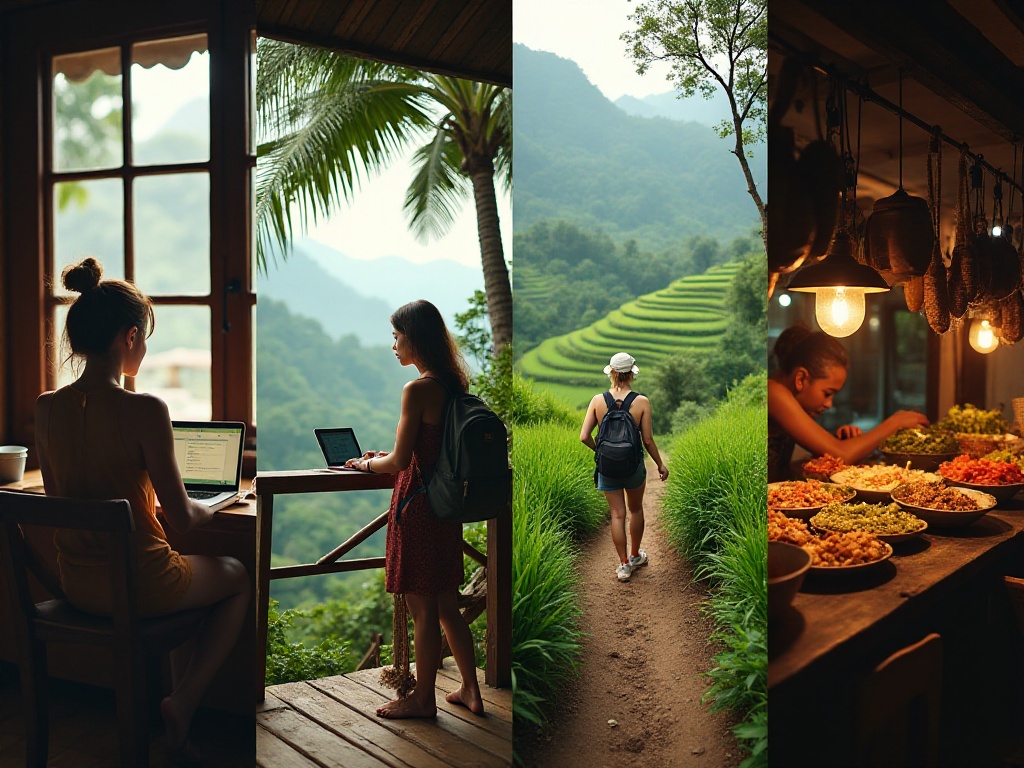
Talking about equipment reminds me of some embarrassing moments. When I first packed, I practically tried to bring my entire house with me. I bought a 65-liter backpack and stuffed it with "might need" items: seven or eight sets of clothes, three pairs of shoes, various electronic devices, thick travel guides, and even a small rice cooker! The result was predictable - my backpack felt like a brick, and I'd be out of breath after walking just five minutes.
In Bangkok, I finally had enough. I remember that day in a hostel on Khao San Road, looking at other backpackers' light luggage and then at my almost-exploding bag, when it finally clicked. The next day, I went to the post office and mailed half my stuff back home. It felt like lifting a thousand-pound weight off my shoulders.
Looking back, you really need very few things. A 35-40 liter backpack is absolutely sufficient. My final ultimate packing list looked like this: three quick-dry T-shirts (one to wear, two as backup), two pairs of quick-dry pants (one convertible pair that could become shorts), one lightweight rain jacket, one pair of hiking shoes suitable for long walks, and one pair of light sandals.
For electronics, I only brought my phone, power bank, power adapter, and a small camera. Honestly, phone cameras are good enough these days, but I still wanted a camera to capture special moments. For toiletries, I only packed a toothbrush, toothpaste, sunscreen, and some basic medications - everything else could be bought locally.
All of this together weighed only seven or eight kilograms, making it very comfortable to carry. Plus, with fewer things, packing only took a few minutes. Most importantly, having less stuff made the entire journey more liberating, as I didn't have to constantly worry about watching my luggage.
My Southeast Asian journey began in Bangkok. I chose Bangkok as the starting point because of its convenient transportation and relatively cheap flights. Flying from Beijing to Bangkok could cost as little as 2,000-3,000 yuan if you're lucky.
After four days in Bangkok, I headed north to Chiang Mai. Chiang Mai's pace was much slower than Bangkok's, with ancient city alleys perfect for leisurely exploration. There, I joined a cooking class and learned to make Thai curry and Tom Yum soup. Then I went to Pai, a charming mountain town perfect for relaxation and contemplation.
From Thailand, I headed south to Penang, Malaysia. Penang's street art and Nyonya cuisine were absolutely captivating. Next was Kuala Lumpur, which, despite being a metropolis, had many interesting spots like the night market in Bukit Bintang with its distinct local character.
Then I turned east to Indonesia. I spent several days in Yogyakarta, visiting Borobudur, the world's largest Buddhist temple complex - truly impressive. Then I went to Bali, where I learned to surf. Despite being covered in bruises, I had an amazing time.
Finally, I returned via Singapore. Though small, Singapore was dazzling, especially the night view from Marina Bay Sands Sky Garden - it was absolutely breathtaking.
The advantage of this route is that you can adjust it based on your interests and energy levels. For instance, I originally planned to visit Lombok, but after hearing good things about the Gili Islands near Bali, I changed course and went there instead. The beaches and diving spots there turned out to be absolute paradise.
For transportation, I mainly relied on budget airlines and long-distance buses. Although budget airlines often had delays and buses weren't particularly comfortable, they were the most economical choice. Often, the journey itself provided the most memorable experiences - like meeting a German couple on a night bus in Vietnam, with whom I still keep in touch.
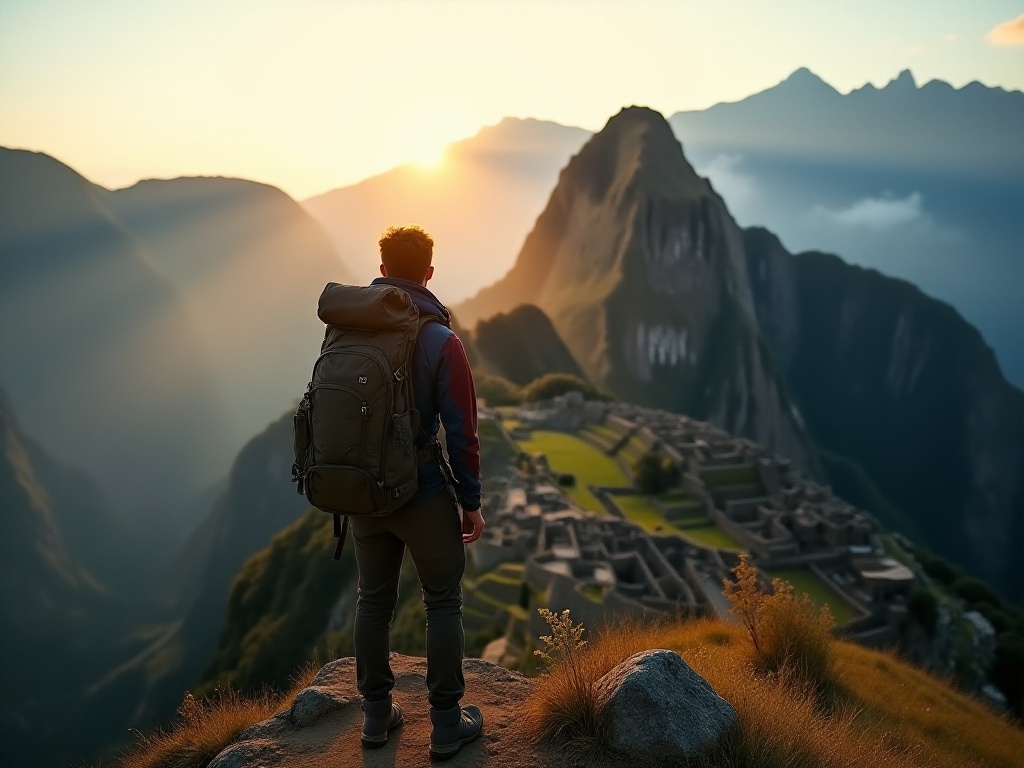
I experienced all sorts of accommodation during my travels. The cheapest was a bed in a Chiang Mai hostel, costing only 30 yuan per night. Although it was an eight-bed dorm, it was clean, and I met many interesting people.
The most expensive was a boutique resort in Bali, costing 600 yuan per night. While I thought the price was a bit extravagant at the time, the sunset view from the infinity pool made it worth every penny. Plus, the resort staff were incredibly friendly, delivering fresh coconuts to the room every morning.
But the most memorable accommodation experience was in Vietnam's mountain region. While trekking in Sa Pa, I met a local Hmong girl who invited me to stay in their village. It was a traditional wooden house, and at night we sat around the fire eating dinner with her whole family. Despite the language barrier, the warmth of that experience stays with me to this day.
On Don Det in Si Phan Don, Laos, I stayed in a very basic wooden bungalow where I could hear the Mekong River at night and was woken by roosters in the morning. Though primitive, the experience of being so close to nature was amazing.
In Singapore, because it was so expensive, I chose a capsule hotel. While the space was indeed small, it was thoughtfully designed and located in Chinatown, allowing me to enjoy authentic Hainanese chicken rice at Maxwell Food Centre in the evening.
The biggest advantage of staying in hostels is meeting friends from around the world. I remember meeting a Japanese girl in a Penang hostel who had been traveling for over a year. Hearing about her experiences in Africa gave me more dreams for future travels.
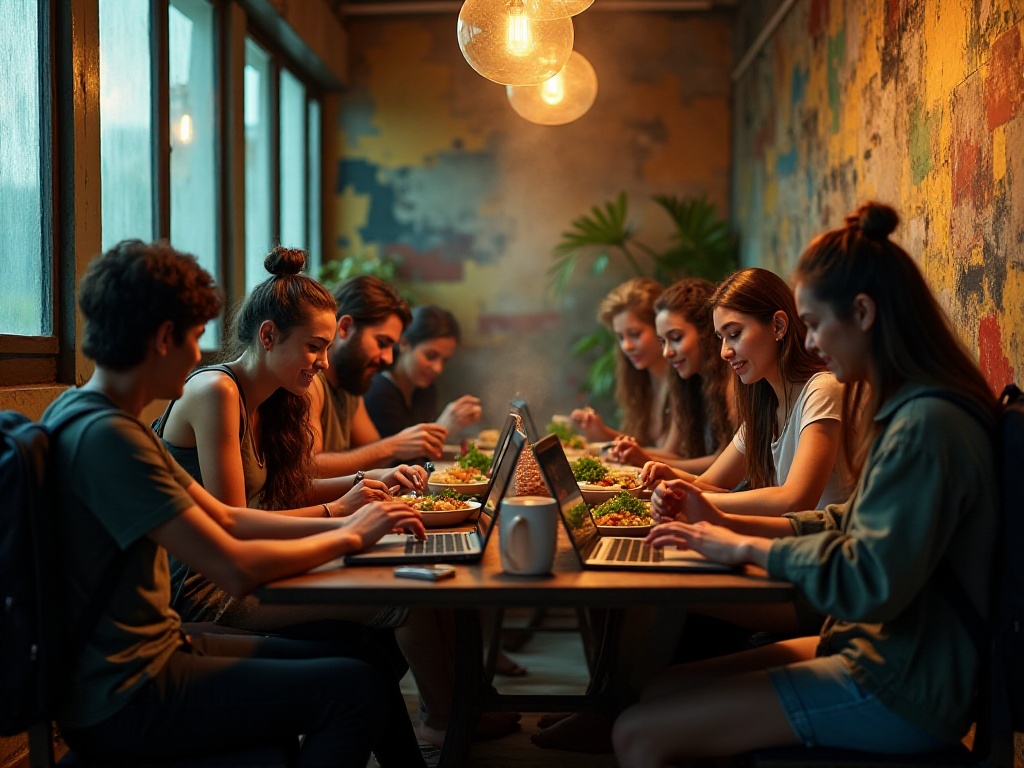
What shocked me most during this journey wasn't the scenery, but the cultural differences. At Angkor Wat in Cambodia, I met a very talkative local guide. He told me that over 50% of Cambodia's population is under 25 years old. This statistic reflects both the country's past hardships and its current vitality.
In Luang Prabang, Laos, I witnessed the morning alms-giving ceremony. Before dawn, long lines of monks formed in the streets, with locals kneeling alongside, reverently placing food in their alms bowls. That peaceful and serene atmosphere helped me truly understand the meaning of faith for the first time.
In Yogyakarta, Indonesia, I visited a fascinating museum showcasing traditional Javanese shadow puppetry. The museum teacher explained how each puppet character represents different personalities and qualities, using these stories to convey values and life philosophy.
In Malacca, Malaysia, I saw the perfect fusion of Chinese, Malay, and Portuguese cultures. The architectural styles, food flavors, and even people's clothing all demonstrated the charm of multicultural integration.
Most touching was the hospitality of people everywhere. In Hanoi, Vietnam, when I got lost, a pho vendor not only gave me directions but insisted on treating me to a bowl of noodles. At Chiang Mai's night market, a fruit vendor always gave me extra mango slices when she saw me alone. These small gestures showed me the warmth of humanity.
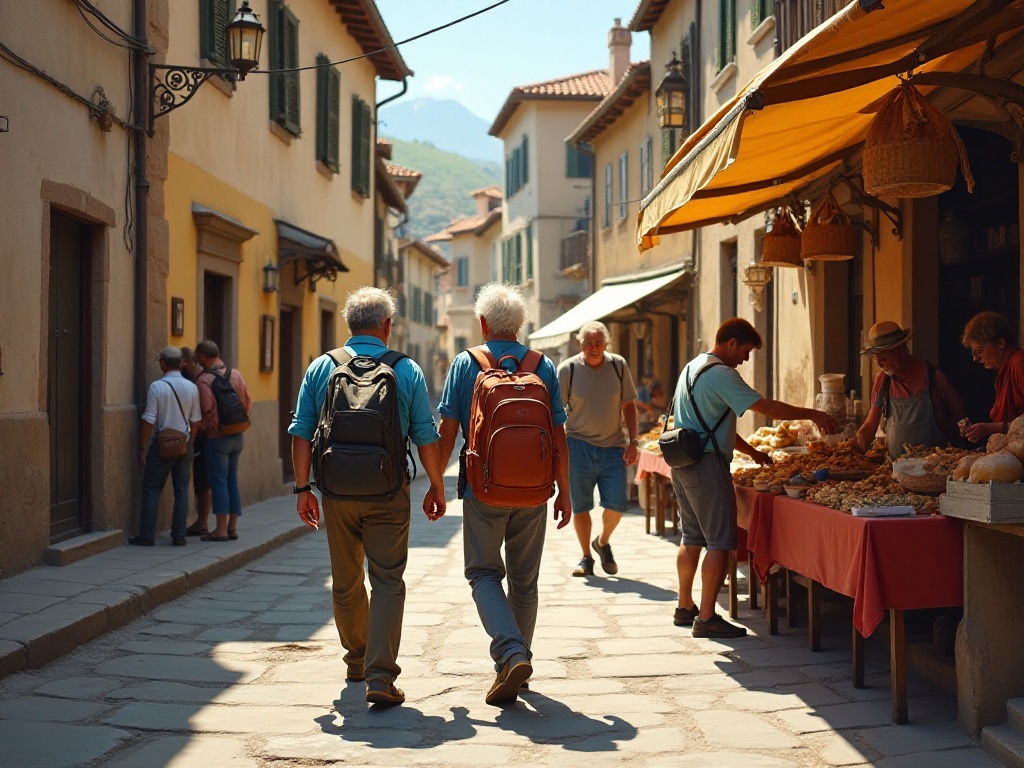
Many people think international travel must be expensive, but with proper planning, you can experience a different life with very little money. I spent a total of 15,000 yuan over these 80 days, averaging less than 200 yuan per day.
For accommodation, I mostly chose youth hostels, costing between 30-100 yuan per night. Sometimes I'd find good Couchsurfing hosts and stay with locals for free, which not only saved money but also provided better cultural understanding.
I mainly ate at street stalls and night markets. Honestly, these places often serve more authentic food than fancy restaurants. For example, in Penang, a bowl of authentic laksa cost only about 10 yuan; in Bangkok, 20 yuan could buy an incredibly delicious curry crab.
Transportation costs were mainly for inter-city travel. I would book budget airline special deals in advance - sometimes with luck, flying from Bangkok to Chiang Mai would cost just over 100 yuan. Within cities, I relied on walking and public transport, saving money while better experiencing city life.
In high-cost cities like Singapore, I used a quick in-and-out strategy, focusing time on must-see attractions. In lower-cost countries like Laos and Cambodia, I stayed longer to experience local life at a slower pace.
To save money, I learned some tricks. For example, I always bought water and snacks from supermarkets rather than tourist spots, cooked my own breakfast when staying at hostels, and looked for free visiting hours or combination tickets for attractions.
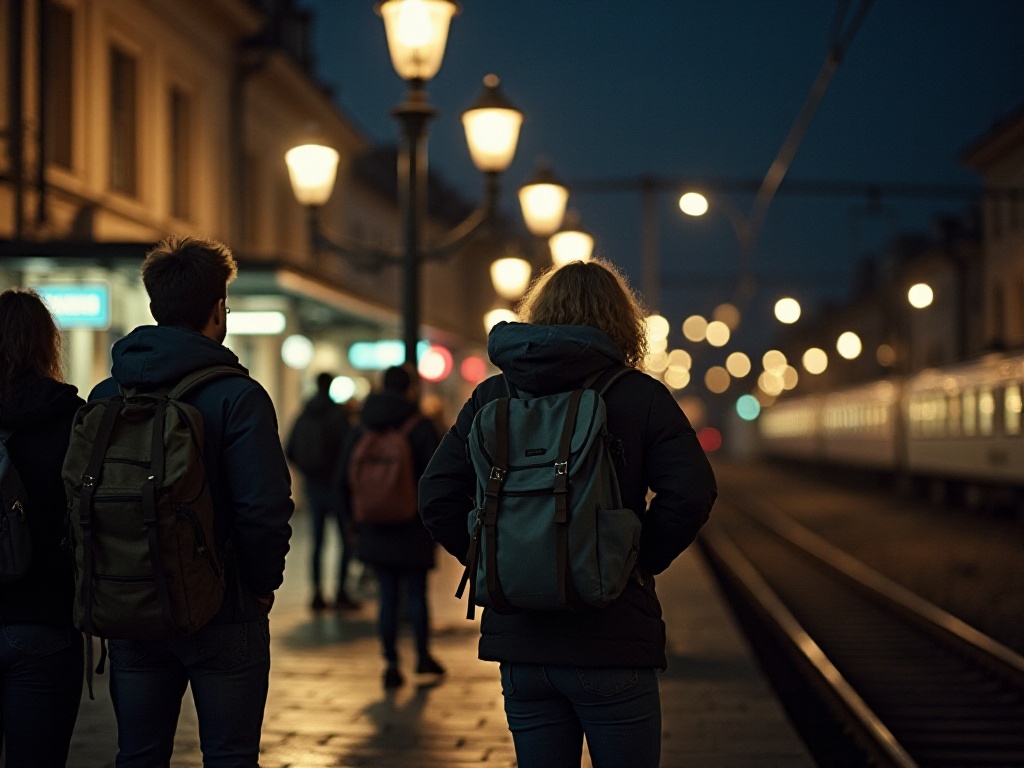
After these 80 days of travel, my biggest realization was that backpacking isn't about checking off tourist spots, but experiencing different ways of life. Those unplanned encounters and experiences often become the most precious memories.
For instance, on Train Street in Hanoi, I met a group of backpackers from around the world. We sat by the roadside drinking Hanoi beer, sharing our travel stories. Some had quit high-paying jobs to travel the world, others were searching for life direction - each story was unique and fascinating.
On Koh Chang in Thailand, I met a retired British couple fulfilling the travel dreams of their youth. Watching them walk hand in hand on the beach, I understood that travel has no age limit - what matters is keeping a young heart.
This journey also gave me new perspectives on life. I used to think life had to follow a set path, but now I understand there are many possibilities. On the road, I met teachers, designers, café owners - everyone living happily in their own way.
Most importantly, this trip taught me how to be alone and how to connect with strangers. When alone, I would sit by the sea, watch the sunset, and feel inner peace; when meeting like-minded friends, we would share experiences together - it was truly magical.
Looking back, although there were challenges during those days on the road, each day was fulfilling and happy. Now I'm back to normal work life, but those 80 days will forever remain my life's most precious treasure.
Travel is like a mirror, showing us different worlds and different versions of ourselves. If you also have travel dreams, don't hesitate - while you're young, be brave and go out there. Trust me, the experiences on the road will become your life's most beautiful memories.
 Previous
Previous
